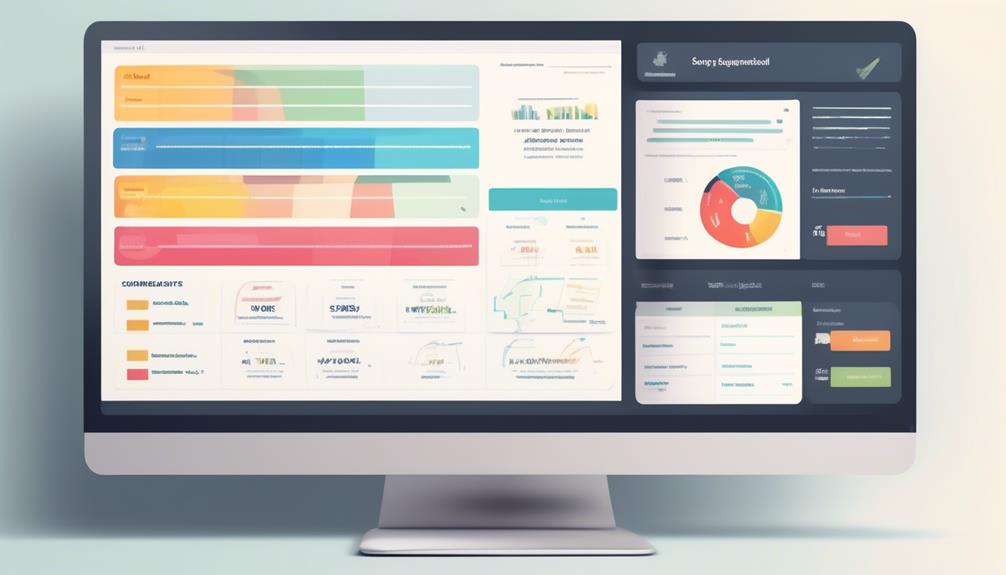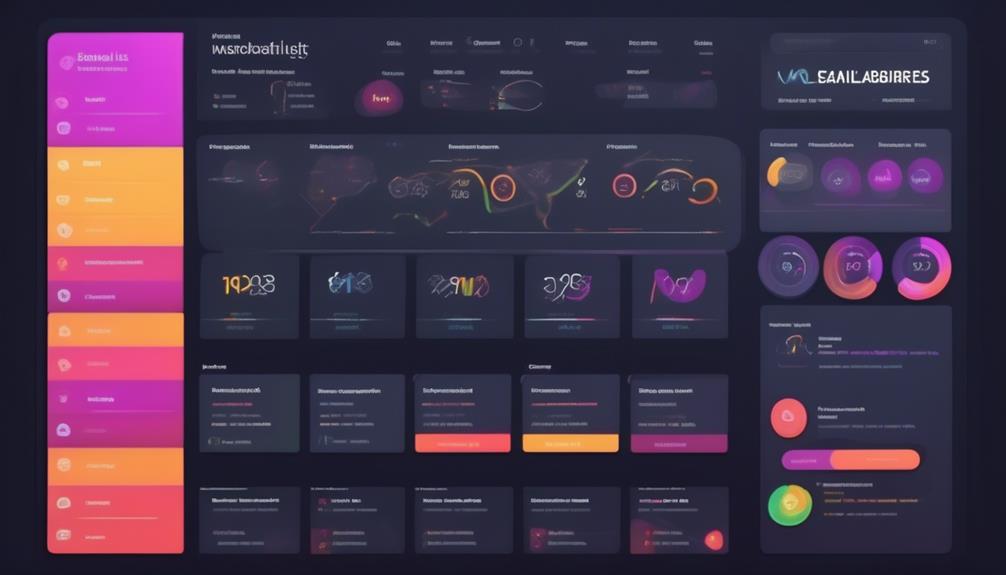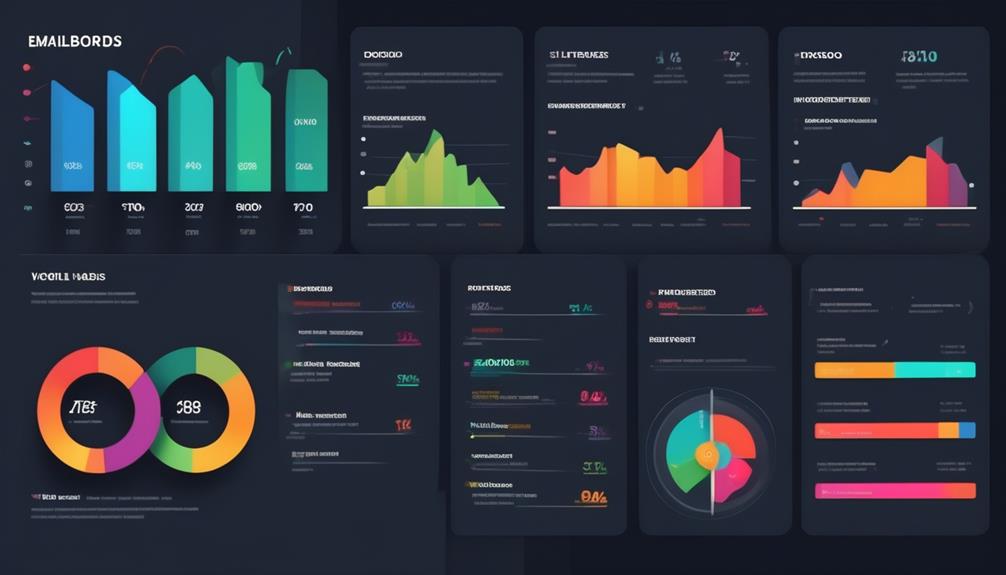Creating the perfect email campaign is like crafting a masterpiece on canvas – beginning with broad strokes before delicately adding exquisite details to captivate the audience.
In the world of digital marketing, the process of segmenting email campaigns is just as crucial. But how do we navigate the vast array of tools available to achieve effective segmentation?
Well, let's just say that the right tool can make all the difference in creating targeted and engaging email campaigns that yield impressive results.
But which tools are the top contenders for this task? Stay tuned to discover the key players in the realm of effective email campaign segmentation.
Key Takeaways
- Marketo Engage, HubSpot Marketing Hub, Customer.io, SAS Customer Intelligence 360, Pinpointe, and Constant Contact are top email marketing tools for effective segmentation.
- Segmentation allows for personalized and targeted communications, leading to higher engagement and conversions.
- Customization options in Salesforce Marketing Cloud enable users to personalize emails based on customer preferences and behaviors.
- Real-time performance metrics provided by these tools help track and optimize email campaigns for better results.
Marketo Engage
When using Marketo Engage, digital marketers can leverage real-time customer segment building and personalized communications to maximize engagement and boost campaign performance. This marketing automation platform offers a comprehensive set of tools for effective campaign segmentation and personalized communication strategies. With its real-time performance metrics, Marketo Engage enables marketers to make data-driven decisions, leading to increased conversions and overall campaign success.
Marketo Engage stands out as a powerful solution for email campaign segmentation and management. Its real-time customer segment building and updates allow marketers to adapt to changing customer behaviors instantly. This agility is crucial in today's fast-paced digital landscape.
The platform's ability to provide personalized communications means that marketers can deliver targeted messages to specific segments, resulting in higher engagement and conversion rates.
HubSpot Marketing Hub
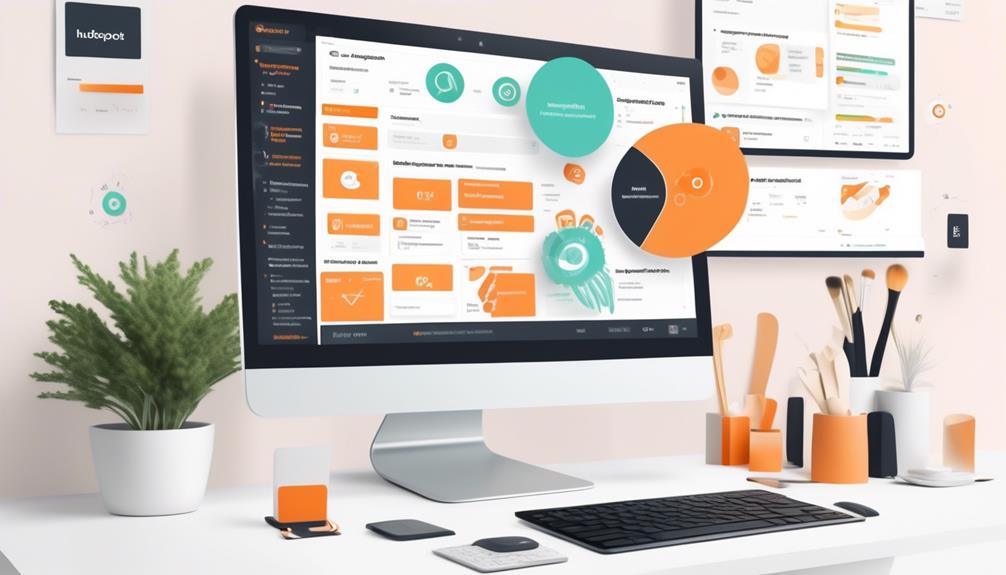
HubSpot Marketing Hub streamlines email campaign segmentation and management through its integrated suite of tools, enabling digital marketers to effectively target and engage with their audience. With its emphasis on personalized communications and real-time performance metrics, HubSpot Marketing Hub stands out as a comprehensive platform designed to attract new subscribers and grow email lists. Its features for building and updating customer segments in real time facilitate targeted and effective email campaigns, while its integration capabilities ensure seamless data exchange with other applications, enhancing workflow efficiency. Below is a comparison table highlighting the key features of HubSpot Marketing Hub in the context of email marketing platforms and list segmentation:
| Features | HubSpot Marketing Hub |
|---|---|
| List Growth | Comprehensive suite for attracting new subscribers and growing email lists |
| Segmentation Tools | Real-time customer segment building and updating |
| Integration Capabilities | Seamless data exchange with other apps for enhanced workflow efficiency |
HubSpot Marketing Hub's user-friendly interface and robust capabilities make it a versatile and valuable tool for digital marketers seeking to optimize their email campaign segmentation and management.
Customer.io
When it comes to segmentation options, targeted content, and personalized messaging, Customer.io is a top contender.
The platform allows us to tailor our communication to the specific needs and behaviors of our audience, ensuring that our messages are relevant and impactful.
Segmentation Options
Customer.io offers a range of segmentation options to help marketers engage and retain audiences through personalized communications. The platform's emphasis on automation enables real-time segment building, ensuring that audience engagement remains a top priority.
By utilizing Customer.io's segmentation capabilities, marketers can target specific customer segments with personalized emails, push notifications, SMS, and in-app messaging. This level of customization and targeting is essential for effective email marketing campaigns, allowing for increased relevance and resonance with the audience.
Furthermore, the availability of real-time performance metrics empowers marketers to continuously optimize their segmentation strategies, leading to enhanced conversions and overall campaign success.
Customer.io's segmentation options provide valuable tools for marketers seeking to elevate their email marketing efforts and drive meaningful engagement with their audiences.
Targeted Content
Building on our discussion of segmentation options, the targeted content feature in Customer.io provides a powerful tool for delivering personalized communications to specific customer segments. With this capability, we can create highly tailored content that resonates with each segment of our audience, enhancing engagement and conversion rates.
By leveraging this functionality, we can ensure that our email marketing tools are utilized to their full potential, delivering the right message at the right time in the customer journey. This targeted approach allows us to address the unique needs and preferences of different customer segments, ultimately leading to more effective communication and a more impactful customer experience.
Through segmentation and targeted content, we can strategically guide our audience through the customer journey, nurturing them towards conversion and loyalty.
Personalized Messaging
In implementing personalized messaging through Customer.io, we strategically tailor our communications to individual customer segments, ensuring a more impactful and effective customer experience. By leveraging this email marketing tool, we can enhance our segmentation strategies and deliver personalized content that resonates with our audience. The table below compares key features of various email marketing tools, emphasizing how personalized messaging is facilitated to create targeted and impactful campaigns.
| Email Marketing Tool | Segmentation Capabilities | Personalized Messaging Features |
|---|---|---|
| NotifyVisitors | Segments users, customizes email templates | Emphasizes inbox delivery |
| Dripify | Empowers connection with potential prospects, offers email automation features | Provides a comprehensive email finder guide, enables effective outreach |
| Sender | Manages email and SMS campaigns, includes segmentation and automation workflows | Focuses on inbox delivery, implements a strict no-spam policy |
| Omnisend | Offers a drag-and-drop visual builder, integrates multiple channels into automation workflows | Supports email, SMS, push notifications, Facebook Messenger, and Whatsapp |
| ConvertKit | Automates email newsletter campaigns, builds opt-in forms, monitors email metrics | Improves click-through rates and conversions, focuses on bottom line results |
Iterable

Iterable streamlines email marketing efforts by combining all the necessary tools into a single platform, saving time and effort for digital marketers.
It offers a comprehensive suite of email marketing tools, including segmentation and personalized messaging, to help marketers create and execute targeted email campaigns.
With Iterable, users can easily segment their audience based on various criteria such as demographics, behavior, and engagement, allowing for more personalized and relevant communication.
This platform empowers marketers to send targeted and timely emails, track campaign performance for better insights, and ultimately stand out in customers' inboxes.
Additionally, Iterable provides real-time performance metrics, enabling users to gauge the effectiveness of their email campaigns and make data-driven decisions to optimize conversions.
Salesforce Marketing Cloud
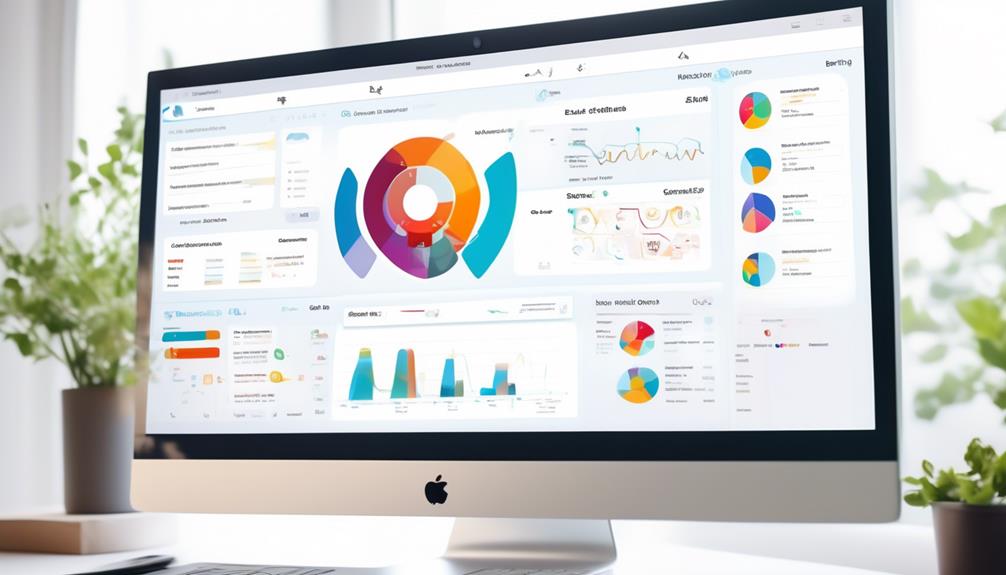
Salesforce Marketing Cloud provides segmentation benefits, customization options, and targeted audience reach for our email campaigns.
With its features, we can tailor our communications to resonate with specific segments, ensuring maximum engagement.
Segmentation Benefits
By leveraging segmentation in Salesforce Marketing Cloud, businesses can create targeted and timely emails that maximize engagement and increase conversions through personalized communications.
The benefits of segmentation are substantial, providing emotional resonance and strategic advantages:
- Emotionally resonant: Tailoring emails based on customer preferences fosters a sense of being understood and valued, leading to stronger brand loyalty and customer satisfaction.
- Feeling understood: Customers receive content that aligns with their interests, making them feel valued and understood by the brand.
- Strategic advantage: Segmenting email lists allows for precise targeting, ensuring that marketing efforts are focused and impactful.
- Precision targeting: By targeting specific customer segments, companies can enhance the relevance of their messaging, leading to higher open and click-through rates.
Customization Options
Leveraging the benefits of segmentation in Salesforce Marketing Cloud, we can now explore the customization options available for creating targeted and timely emails.
The platform's customization options enable users to personalize communications, making their emails stand out in customers' inboxes. With features for creating and updating customer segments in real time, Salesforce Marketing Cloud empowers marketers to tailor their messages based on specific customer behaviors and preferences.
Additionally, the platform allows for tracking email campaigns, providing valuable insights into performance and enabling adjustments for better results.
These customization options in Salesforce Marketing Cloud make it a powerful tool for executing effective and impactful email marketing campaigns.
Targeted Audience Reach
To maximize audience engagement and enhance email campaign effectiveness, the Targeted Audience Reach feature in Salesforce Marketing Cloud allows for real-time building and updating of customer segments. This tool enables the sending of personalized communications to evoke a sense of connection and relevance.
By providing real-time performance metrics, it effectively increases conversions to create a sense of urgency and action. The platform allows for creating targeted and timely emails, evoking a feeling of exclusivity and importance, to stand out in customers' inboxes.
This level of segmentation and targeting is crucial in today's competitive market, where personalized communication is key. Salesforce Marketing Cloud's Targeted Audience Reach feature sets the stage for effective email marketing tools and segmentation, ensuring that the right message reaches the right audience at the right time.
SAS Customer Intelligence 360
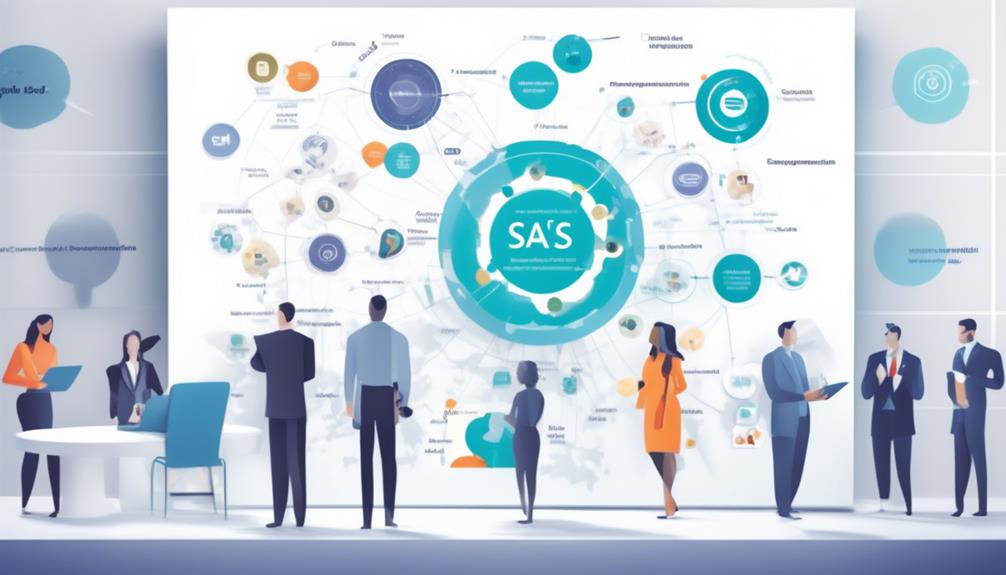
SAS Customer Intelligence 360 offers robust real-time customer segmentation and updating capabilities, empowering businesses to deliver highly personalized communications and drive increased customer engagement. This comprehensive tool for effective email campaign segmentation provides real-time performance metrics aimed at increasing conversions. Here's how SAS Customer Intelligence 360 stacks up against other email marketing tools:
| Feature | SAS Customer Intelligence 360 |
|---|---|
| Real-time customer segmentation | Yes |
| Personalized communication delivery | Yes |
| Real-time performance metrics | Yes |
| Comprehensive email campaign tool | Yes |
| Dynamic customer segment updating | Yes |
SAS Customer Intelligence 360 stands out as a top choice for businesses seeking powerful segmentation capabilities and personalized communication delivery. With its real-time updating and performance tracking, it enables businesses to tailor their email campaigns effectively, resulting in higher customer engagement and conversion rates.
Pinpointe
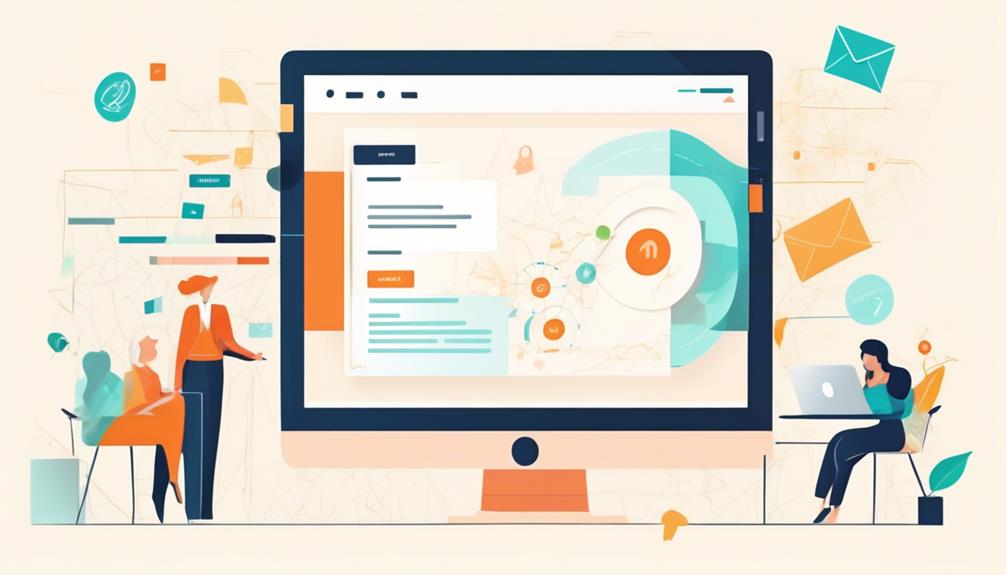
Pinpointe's advanced segmentation capabilities and emphasis on inbox delivery make it a valuable tool for precise targeting and ensuring email deliverability.
With Pinpointe, we can create highly targeted segments based on customer behavior, interests, and demographics, allowing us to personalize our email marketing campaigns and increase engagement.
The real-time performance metrics provided by Pinpointe enable us to track and optimize our email campaigns efficiently, ensuring that we deliver the right message to the right audience at the right time.
Moreover, Pinpointe's platform allows for building and updating customer segments in real time, ensuring dynamic and relevant email content that resonates with our audience on a personal level.
Emphasizing inbox delivery, Pinpointe ensures that our emails reach the intended recipients, maximizing the impact of our campaigns.
Additionally, Pinpointe provides comprehensive reporting tools that allow us to analyze campaign performance and make data-driven decisions, empowering us to continually improve and refine our email marketing strategies for optimal results.
Constant Contact
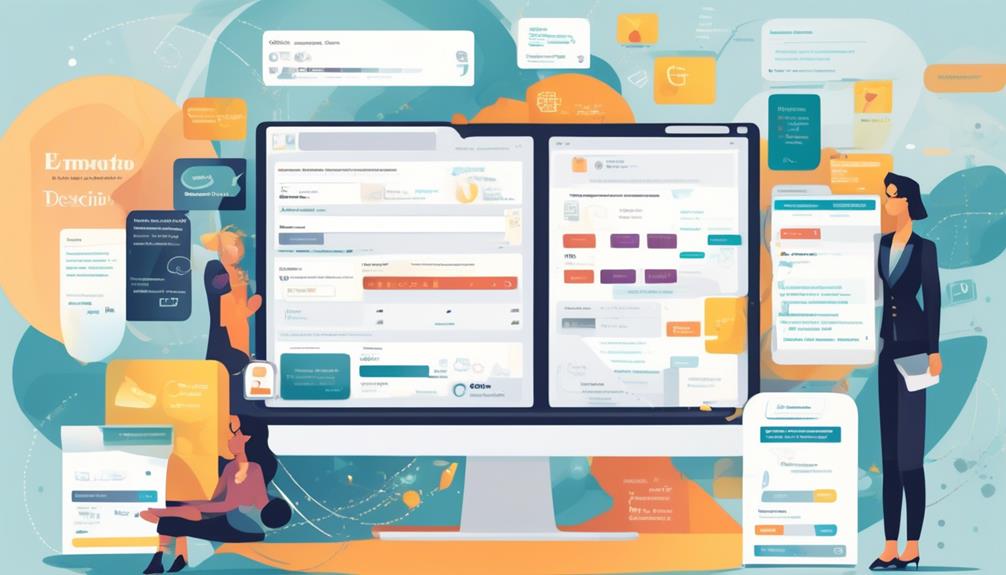
Constant Contact offers a diverse range of specialized features tailored to various industries, empowering users to execute robust and targeted email marketing campaigns. With its array of email marketing tools, Constant Contact provides industry-specific templates, making it easier for businesses to create compelling content that resonates with their audience. The platform's support through live chat and discussion forums ensures that users have the assistance they need to maximize the potential of their email campaigns.
One of the key strengths of Constant Contact is its segmentation capabilities, allowing users to divide their customer lists based on various criteria. This segmentation feature enables businesses to send more personalized and relevant content to their contacts, ultimately leading to higher engagement and conversion rates. Additionally, Constant Contact provides real-time performance metrics, giving users valuable insights into the effectiveness of their campaigns.
Frequently Asked Questions
What Is the Best Way to Run Segmented E Mail Campaign?
We find the best way to run segmented email campaigns lies in leveraging customer data and behavior to create targeted, personalized content.
By utilizing segmentation tools and real-time analytics, we can tailor our messaging to specific customer segments, increasing engagement and conversions.
This approach allows for timely and relevant communication, ultimately leading to higher open and click-through rates, as well as improved customer retention.
How Can I Improve My Email Segmentation?
To improve email segmentation, we analyze customer data to understand their behaviors and preferences.
By utilizing advanced segmentation tools, we can precisely target our audience with tailored content, increasing engagement and conversion rates.
This personalized approach builds trust and fosters stronger relationships with our subscribers.
Ultimately, effective segmentation enhances our email marketing efforts, resulting in higher open rates, click-through rates, and improved ROI.
What Is the Best Tool for Email Marketing?
We find that the best tool for email marketing is one that offers robust segmentation capabilities, automation features, and comprehensive reporting tools.
It should also prioritize inbox delivery and emphasize connection with potential prospects.
The tool should empower effective outreach and improve click-through rates and conversions.
With these criteria in mind, we recommend considering NotifyVisitors, Dripify, Sender, Omnisend, and ConvertKit as top contenders for your email marketing needs.
What Tool Helps Marketers Manage Every Part of an Email Marketing Campaign?
We use Sender to manage every part of our email marketing campaigns. It's a powerful tool that handles segmentation and automation workflows seamlessly.
With a rich library of ready-to-send popups, forms, and newsletters, it streamlines our marketing efforts. Plus, its strict no-spam policy ensures our emails reach the inbox.
From crafting personalized emails to tracking campaign performance, Sender has us covered every step of the way.
What Are the Key Features of Effective Email Campaign Segmentation Tools?
When it comes to successful email marketing, using email campaign segmentation tools can make a significant difference. These tools allow you to target specific groups within your audience, increasing the relevance and effectiveness of your emails. Key features of effective email campaign segmentation tools include advanced targeting options, user-friendly interfaces, and robust analytics capabilities.
Conclusion
In the world of email marketing, effective segmentation is the key to unlocking the potential of your campaigns.
Just like a skilled chef uses different ingredients to create a flavorful dish, these top tools act as the essential ingredients for creating personalized and engaging email campaigns.
By leveraging the power of these tools, we can craft emails that resonate with our audience, increase open rates, and drive better results.
It's time to cook up some successful email campaigns!
